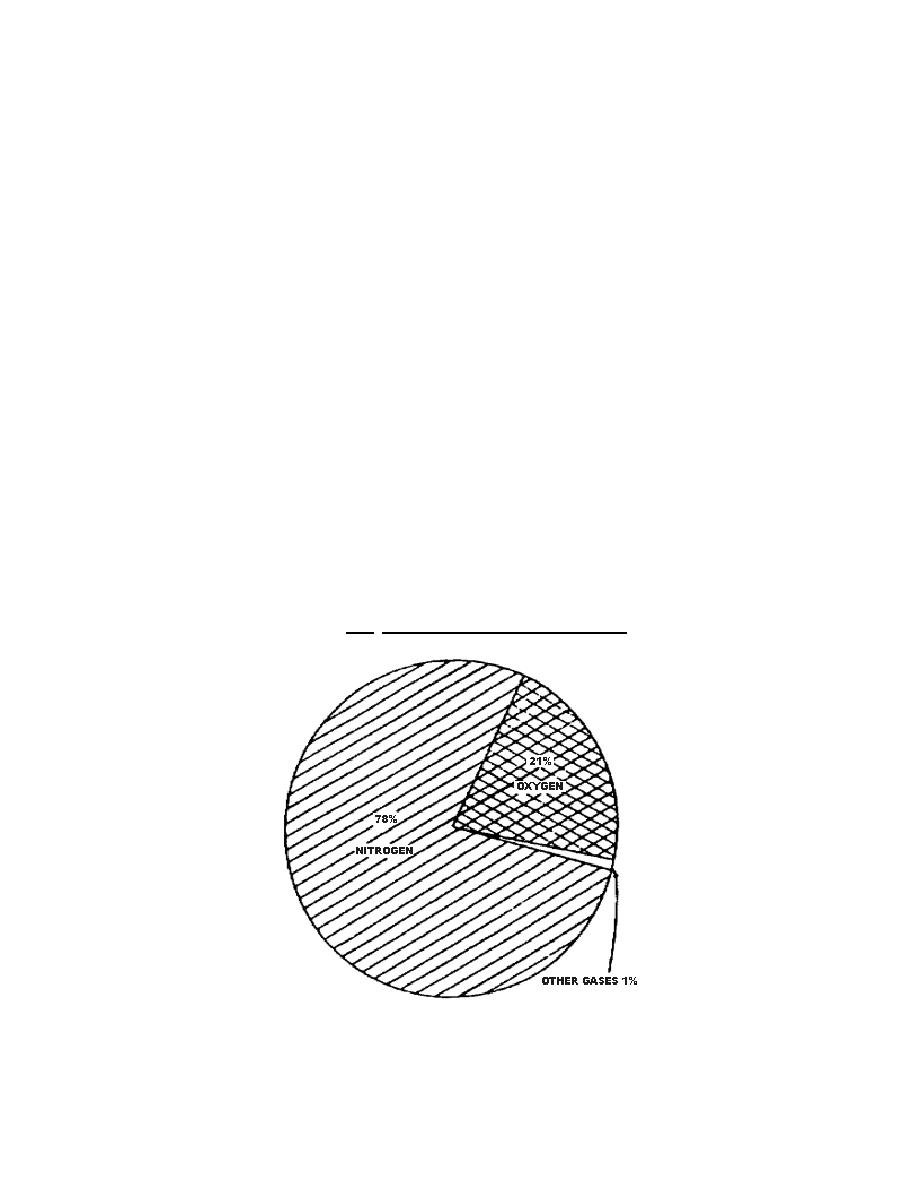
1.1 GENERAL
The atmosphere is the envelope of air that surrounds the earth. Over one-half of the air, by weight, is
within the lower 18,000 feet of the atmosphere; the remainder is spread out over a vertical distance in
excess of 1,000 miles. No definite outer atmospheric boundary exists: the air particles become fewer
with increasing altitude until they gradually overcome the earth's gravitational force and escape into
space. The atmosphere rotates with the earth as a gaseous outer cover. Within the atmosphere, other air
movement occurs. Differences in the temperature of the earth's surface affect the density of the
atmosphere and cause a continuous internal air movement called circulation. The force of this
circulation varies between breezes and winds. The latter can have forces that range from mild to gales,
hurricanes, and typhoons.
1.2 COMPOSITION OF THE ATMOSPHERE
As shown in figure 1.1. a given volume of dry air contains approximately 78 percent nitrogen; 21
percent oxygen; and 1 percent argon, carbon dioxide, and minute amounts of other gases. Air contains,
in addition to the gases just mentioned a variable amount of water vapor, most of which is concentrated
below 30,000 feet. The maximum amount of water vapor the air can hold depends primarily upon the
temperature of the air; the higher the temperature, the more water vapor the air can hold. Water vapor in
the atmosphere varies from insignificant amounts to 4 percent by volume (100 percent humidity).
Air also contains variable amounts of impurities such as dust, salt particles, and products of combustion.
These impurities are important because of their effects on visibility and especially because they are
necessary to cause the water vapor to form into clouds and fog and to condense into rain and snow. If
the air were absolutely pure there would be little condensation.
Figure 1.1. Composition of the Atmosphere
2
AL0966



 Previous Page
Previous Page
